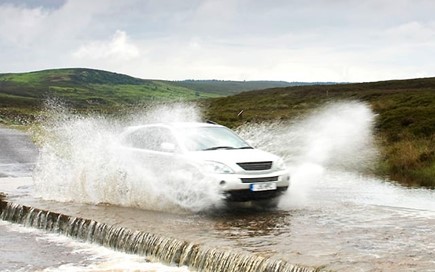Home | Uncategorized |
Will it ever stop raining? All it seems to have done lately is rain and some part of Nottinghamshire, Derbyshire or the East Midlands seem to be constantly in flood alert.
You may have had your journey to work affected by road closures due to flooding, or even evacuated from your home due to flood alert or even flood damage.
We can’t make the rain go away but we can provide some advice and guidance on flood prevention for your home and driving safely in flood conditions or heavy rain.
Understand your flood risk.
- Find out your flood risk
- If your home is at risk, make a flood plan
- If your home is at risk, sign up for EA Flood Warnings by phone/text and check the online flood warnings regularly. Sign up for free text or email alerts – from the EA or SEPA – if your home is at risk of flooding. For England and Wales flood alerts, if you prefer to sign up by phone (rather than online) call Floodline on 0345 988 1188.
- Knowyourfloodrisk.co.uk have produced an online guide on how to protect your home that includes some of the following advice.
Receive free flood warnings!
Real-time flood warnings can be found online for England, Wales and Scotland. These highlight the locations of each warning, the water course that is affected and the severity of the warning at the given location. There are three severity levels for these alerts:
- Alert
This is the lowest level of flood alert. Simply check your home flood plan / flood kit and continue to monitor for further warnings. - Warning
The second level of the online flood warning system. Upon receiving this warning in your area, you should ensure all defences are in place on the property and move valuables to a safe place where they will not be affected by floodwater. - Severe Warning
If a severe warning has been placed on your home, there is a significant threat to human life. In this circumstance, it is advised that you evacuate the property immediately and move to higher ground. Remember you can call 999 if there is any danger to human life.
Protect your home.
- Make sure that you have full home flood cover on your buildings/content’s insurance.
- Keep on top of basic maintenance work that keeps your home watertight (or encourage your landlord to do so if this type of work is covered by them). Repair the seals between the window and door frames and brickwork and ensure there are no gaps. Repoint the external brickwork if this is damaged. Age often leads to cracks, sections dropping away and greater porosity. Repointing will correct these defects.
- Consider putting in flood resistance measures or flood resilience measures.
Knowyourfloodrisk.co.uk have created a useful infographic to show some of the measures you can take to protect your home.

In the unfortunate event that you have flood damage to your home or garden we can provide garden or house clearance services to ease the stress of contemplating doing this on your own or if you do prefer to clear the debris yourself, we can provide skip hire to suit your requirements. Please call our friendly team on 01623 627447 who will be happy to discuss all available options with you.

Driving through floodwater and heavy rain can feel quite perilous at the best of times, often catching out newer drivers or those who don’t have any experience with driving in adverse conditions.
Driving through flood water as advised by https://www.theaa.com
How-to drive-in floods and standing water.
If you hear there’s flooding on the way, try to move your car to higher ground to stop it from getting damaged. Water plays havoc with vehicle electrics and could cause several issues (like your airbag suddenly deploying for no reason). Otherwise, follow our tips below:
- Try to avoid standing water if you can.
- Don’t drive into flood water that’s moving or more than 10cm (4 inches) deep. Let approaching cars pass first.
- Drive slowly and steadily so you don’t make a bow wave.
- Test your brakes as soon as you can afterwards.
- Fast-moving water is very powerful – take care or your car could be swept away.
If you do get stuck in flood water, it’s usually best to wait in the car and call for help rather than try to get out.
How to drive in heavy rain.
- Turn your headlights on – the Highway Code says you must use them when visibility is seriously reduced (less than 100m).
- Use fog lights if you like but switch them off when visibility improves.
- Leave twice as much space between you and the car in front – it takes longer to stop in the wet.
- If your steering feels light due to aquaplaning, ease off the accelerator and slow down gradually.
- If you break down don’t prop the bonnet open while you wait. Rain-soaked electrics can make it harder to start the engine.
STAY ALERT AND STAY SAFE
